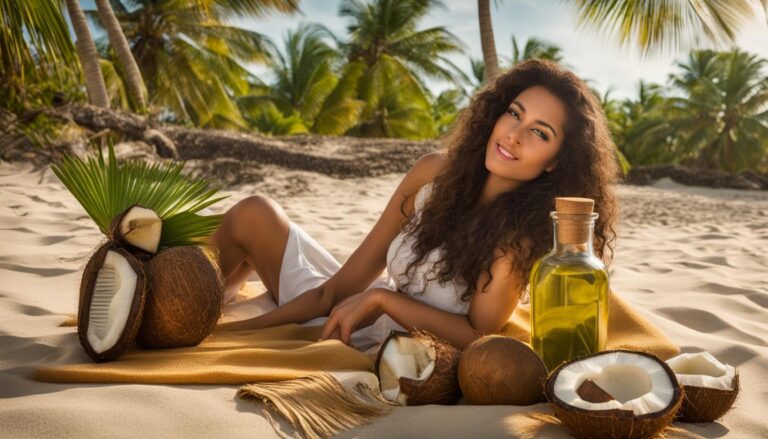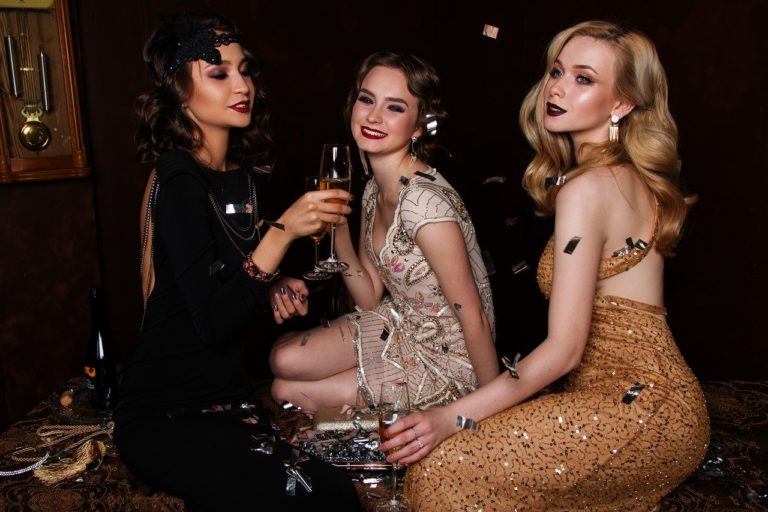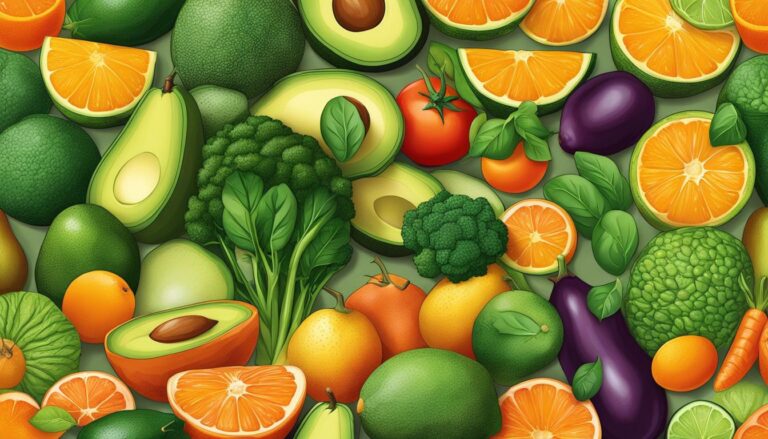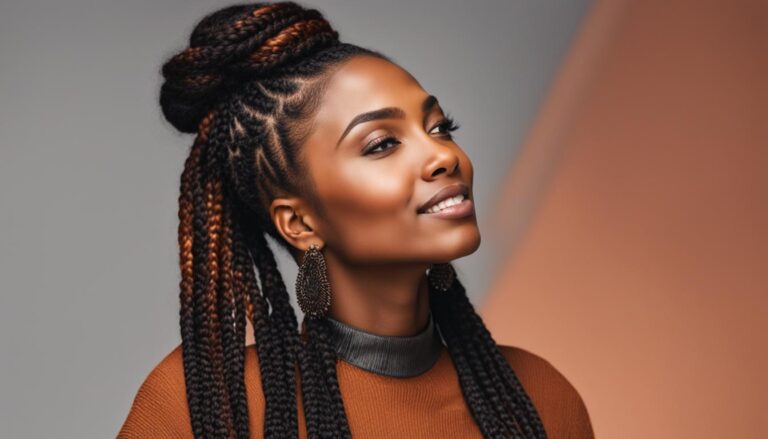What is the oldest evidence of braids?
The history of braids dates back thousands of years, with evidence of this ancient hairstyle found in various civilizations around the world. Let’s delve into the fascinating world of braids and explore their origins and cultural significance.
One of the earliest pieces of evidence for the existence of braids is the Venus of Willendorf, a Palaeolithic female figurine estimated to be 25,000 to 30,000 years old. This small, carved figurine depicts rows of plaits on her head, providing us with a glimpse into the hairstyling practices of that era. Braids were not only a hairstyle but also a skill and an art form, deeply intertwined with the cultures and communities they belonged to.
Key Takeaways:
- The oldest evidence of braids can be traced back to the Venus of Willendorf, a Palaeolithic female figurine.
- Braids were not only a hairstyle but also a skill and an art form.
- Braids played an integral role in the cultures and communities where they originated.
- The Venus of Willendorf provides a glimpse into the ancient hairstyling practices.
- Braids have a rich history that spans thousands of years.
The origins of braids in African culture
Braiding has deep roots in African culture, with the Himba people of Namibia being one of the earliest known practitioners of braiding. In many African tribes, braided hairstyles were used to identify different tribes, as well as indicate a person’s age, marital status, wealth, power, and religion. The tradition of braiding was passed down from elders to younger generations, fostering a sense of bonding and community. Braiding has remained an important cultural practice in Africa and has influenced braiding styles around the world.
Throughout history, African tribes have embraced braids as a form of self-expression and cultural identity. Each tribe has its distinct braiding techniques and patterns that carry deep meaning and symbolism. For example, in the Fulani tribe, women wear intricate cornrow braids called “patewo,” which symbolize beauty and elegance. The Yoruba tribe is known for their “didi” braids, which are tightly woven and often decorated with beads or cowrie shells. These braiding traditions have been preserved over generations, connecting African communities through shared cultural practices.
The significance of braiding in African culture extends beyond its aesthetic appeal. It is a way for individuals to honor their heritage and assert their cultural identity in a world that is increasingly diverse and interconnected. Braids serve as a visual representation of African cultural heritage, allowing individuals to proudly showcase their roots and celebrate their ancestry. In addition, braiding has become an art form that transcends borders and has gained recognition worldwide for its intricate designs and skilled craftsmanship.
The spiritual connection to braiding
For many African tribes, braiding is more than just a hairstyle; it holds deep spiritual significance. It is believed that when braiding, the braider imparts positive energy, prayers, and blessings into the hair of the wearer. Braids are seen as a protective shield that safeguards the individual from negative forces and brings blessings and good fortune. This connection between braiding and spirituality reinforces the cultural and spiritual importance of braids in African communities.
Evolution of Braids Throughout History
Braids have a fascinating history that spans cultures and centuries. From ancient civilizations to modern times, braiding patterns have evolved and been influenced by different societies and traditions.
In Africa, cornrows have been traced back as early as 3500 BC, while afro box braids originated in Egypt around 3100 BC. The Greeks popularized the halo braid in the first century, and Native Americans embraced pigtail braids in the fifth century.
Braiding patterns also varied throughout Europe and Asia. In Europe, the crown braid was a popular style from 1066 to 1485, while in China, the staircase braid gained popularity from 1644 to 1912. Over time, braiding techniques spread across continents, influencing and intertwining with different cultures.
The Cultural Influences on Braiding Patterns
Braids have been influenced by a myriad of cultural practices and beliefs. They have served as a way to showcase identity, social status, and even religious affiliation. Different braiding styles have held significance in various communities, defining traditions and fostering a sense of belonging.
“Braids have been both a personal expression and a reflection of cultural heritage, allowing individuals to connect with their roots and carry on ancestral traditions.” – Hair Historian
The artistry and craftsmanship of braiding have not only been a means of self-expression but also a celebration of cultural diversity. Braiding patterns have become a visual language, communicating histories, stories, and pride. Today, braids continue to evolve, adapt, and inspire, remaining an integral part of our shared human heritage.
The significance of braids in today’s culture
Braided hairstyles have become increasingly popular in modern times, transcending cultural boundaries and being embraced by people of all ethnicities and genders. The versatility of braids allows individuals to express their personal style, cultural heritage, and sense of identity. Braids are no longer limited to specific cultural groups but have become a form of self-expression and a way for people to showcase their individuality.
Braided Hairstyles: A Form of Self-Expression
Braids offer a unique way for individuals to express themselves and their creativity. With a wide range of braiding styles to choose from, people can experiment with different patterns, thicknesses, and lengths to create a look that is uniquely their own. Whether it’s intricate cornrows, elegant fishtail braids, or bold box braids, each style carries its own symbolism and cultural significance.
“Braided hairstyles are more than just a trendy fashion statement; they are a powerful form of self-expression and a celebration of diverse cultural traditions.” – Hair Stylist
Celebrating Cultural Significance
Braided hairstyles also serve as a way to celebrate and honor diverse cultural traditions. By wearing braids, individuals can pay homage to their heritage and showcase the beauty and richness of their culture. Braids have deep historical roots in African, Native American, and other ancient cultures, and embracing these styles allows for a connection to the past while embracing modern fashion trends.
- Box braids: Inspired by African traditions and popularized by icons like Janet Jackson and Beyoncé, box braids showcase the beauty and versatility of natural hair.
- Cornrows: Originating in Africa and commonly worn by both men and women, cornrows have become a symbol of African cultural heritage and pride.
- Fishtail braids: This intricate braiding technique, also known as a herringbone braid, is a stunning way to highlight the beauty of long hair.

Embracing Natural Hair
In addition to their cultural significance, braided hairstyles have also become a popular protective style for natural hair. Braids offer a way to protect natural hair from heat damage, harsh weather conditions, and breakage, allowing individuals to embrace and celebrate their natural texture. By incorporating braids into their hair care routine, people can promote healthy hair growth and maintain the integrity of their locks.
The significance of braids in today’s culture cannot be underestimated. From their role in self-expression and cultural celebration to their practicality as a protective hairstyle, braids continue to be a powerful and versatile trend that resonates with people from all walks of life.
The Artistry of Braiding
Braiding is not just a hairstyle, it is a form of art that showcases the skill and craftsmanship of the braider. The intricate designs and patterns created through braiding are a testament to the creativity and talent involved in this ancient practice. Each braid is meticulously crafted, with every strand intricately woven to create a beautiful and unique hairstyle.
Just like a painter uses a brush to create a masterpiece, a braider uses their hands and tools to transform hair into a work of art. The precision and attention to detail required to create complex braiding styles is truly impressive. Whether it’s a fishtail braid, a French braid, or a Dutch braid, each technique requires knowledge, practice, and an artistic eye to achieve the desired outcome.
Braiding is not limited to basic styles; it can also incorporate various elements such as beads, ribbons, and threads to add a touch of flair and individuality. These additional adornments further enhance the artistic nature of braiding, allowing for endless possibilities and customization.
The Craftsmanship of Braiding
“Braiding requires patience, precision, and an understanding of how different hair types behave. It’s a skill that takes years to master and requires constant learning and adaptation. Every braid tells a story, and every braider leaves their mark through their unique style and technique.”
Each braid is a testament to the dedication and craftsmanship of the braider. It is a skill that is passed down through generations, with each braider adding their own creative touch and innovation. The artistry of braiding extends beyond the hair itself; it becomes a reflection of culture, tradition, and personal expression.
- The art of braiding allows for endless creativity and self-expression.
- Braiders are skilled artisans who transform hair into intricate works of art.
- Beads, ribbons, and other embellishments can be incorporated into braids to enhance their artistic appeal.
- Braiding is a skill that requires patience, precision, and constant learning.
The versatility of braids in modern times
In today’s modern era, braids have become more than just a hairstyle – they have evolved into a versatile and creative way to express individuality and style. With the emergence of relaxed braids and diverse braiding techniques, the possibilities for modern braided styles are endless.
Gone are the days of striving for a perfectly neat and tight braid. Modern braided styles embrace a more relaxed and effortless look, allowing individuals to showcase their personality and personal fashion sense. Whether it’s a messy fishtail braid or a boho-inspired halo braid, the emphasis is on natural texture and a carefree vibe.
What makes modern braided styles truly remarkable is the range of techniques and variations available. From classic French braids to Dutch braids, waterfall braids to crown braids, there’s a braiding technique for every occasion and mood. These diverse braiding techniques can be combined and customized to create unique and eye-catching styles that reflect individual preferences and fashion trends.
With the versatility of modern braided styles, they can be adapted to suit various occasions and settings. Whether it’s a casual day at the office, a night out with friends, or an elegant red-carpet event, braided hairstyles offer flexibility and versatility. They can be dressed up or down, making them suitable for any outfit or dress code.

The artistry and craftsmanship involved in creating modern braided styles are truly impressive. Braiders have honed their skills and developed new techniques to create intricate and stunning designs. From intricate cornrow patterns to delicate braided updos, these styles showcase the talent and creativity of hair braiders.
- Braids are no longer limited to specific cultural groups, but are embraced by people of all ethnicities and genders.
- Modern braided styles offer a way to protect natural hair from heat damage and humidity.
- Whether you prefer a relaxed, boho-inspired braid or a sleek and polished style, there’s a modern braided look for everyone.
Braided styles have become a statement of self-expression and a celebration of individuality. They allow people to showcase their cultural heritage, personal style, and creativity. With their versatility, relaxed aesthetic, and diverse braiding techniques, modern braided styles are here to stay.
Conclusion
Braids have a rich history that dates back thousands of years and holds great cultural significance. From their origins in African culture to their widespread adoption across different societies, braids have evolved and adapted to changing fashion trends and societal norms. Throughout history, braids have served as more than just a hairstyle; they have been a way to express cultural heritage, personal style, and a sense of identity.
The artistry and craftsmanship involved in braiding highlight the cultural significance and beauty of this ancient hairstyle. Braiding is not just a skill but also an art form that showcases intricate designs and patterns. It has become a profession and a means of artistic expression for many individuals, with braiding studios serving as important cultural spaces where people come together to bond and celebrate the historical significance of braiding.
In modern times, braids have become more versatile, adapting to a range of styles and preferences. People now embrace a relaxed and effortless look, moving away from perfectly neat and tight braids. Braided styles can be adapted for various occasions, from casual everyday wear to elegant red-carpet events. The evolution of braids reflects the evolving hairstyles and fashion trends of society.
As we look back at the history of braids and their cultural significance, it’s clear that they continue to play a significant role in today’s world. Braids are not only a way to express personal style but also a form of self-expression and a means of protecting natural hair. With their enduring popularity and the endless possibilities they offer, it’s safe to say that braids will continue to evolve and thrive for years to come.
FAQ
What is the oldest evidence of braids?
The oldest evidence for the existence of braids is the Venus of Willendorf, a Palaeolithic female figurine estimated to be 25,000 to 30,000 years old.
What is the significance of braids in today’s culture?
Braids are seen as a form of self-expression and are embraced by people of all ethnicities and genders. They serve as a protective style for natural hair and offer a way to protect hair from heat damage and humidity.
What is the artistry of braiding?
Braiding is not just a hairstyle but also a form of art. It showcases the skill and craftsmanship of the braider, with intricate designs and patterns created through braiding.
How have braids evolved throughout history?
Braids have been influenced by different cultures and have evolved over time. They have been worn by various civilizations, from ancient African tribes to Native Americans and Europeans.
What is the versatility of braids in modern times?
Braids have become more versatile in modern times, embracing a range of styles that are messier, freer, and less perfect. They can be adapted to suit various occasions and fashion trends.







